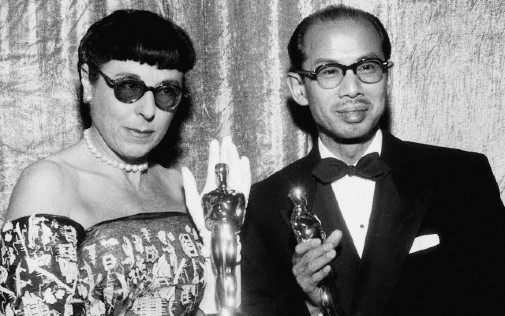
The Academy has always had a certain difficulty in recognizing excellence from films made in any language other than English. When it comes to Asian cinema, that is especially true. Parasite's recent grand victory may be a sign that times are a-changing, but there are still branches of AMPAS that remain quite closed-off and insular.
Thankfully that hasn't been the case with thee design branches. For a long time they were the only place where you could hope to find any sort of honor given to the works of masters like Akira Kurosawa and Kenji Mizoguchi. Japanese cinema, in particular, has found success in the Costume Design category. Overall, five pictures from Japan have been nominated for the prize and two have won. Since all those films are currently available online, most of them streaming on the Criterion Channel, it's a good time to take a look at this peculiarity of Oscar history…
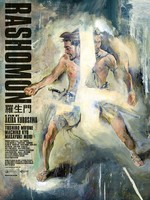 During the post-war period, Japanese cinema went through a Golden Age and was also able to find an international audience. The film that's mostly credited as a historical turning is Akira Kurosawa's Rashomon. Despite a lukewarm reception by Japanese film critics, the picture went on to compete at the 1951 Venice Film Festival. The Daiei Production Company was originally reluctant to let the picture participate and represent the nation's cinema, but, in the end, their concerns proved misguided. After all, Rashomon was a critical hit and won the Golden Lion.
During the post-war period, Japanese cinema went through a Golden Age and was also able to find an international audience. The film that's mostly credited as a historical turning is Akira Kurosawa's Rashomon. Despite a lukewarm reception by Japanese film critics, the picture went on to compete at the 1951 Venice Film Festival. The Daiei Production Company was originally reluctant to let the picture participate and represent the nation's cinema, but, in the end, their concerns proved misguided. After all, Rashomon was a critical hit and won the Golden Lion.
Such was the acclaim that it became one of the first Japanese films to find American distribution in the aftermath of World War II. RKO released it and Rashomon was immediately showered with dazzling reviews, going so far as to win a non-competitive Oscar for Best Foreign Language Film. It also got a Best Art-Direction nod, presaging how the design branches would be Japanese cinema's greatest allies within the Academy in years to come. Still, it would take a Cannes champion to win a Japanese film a competitive Academy Award once and for all.
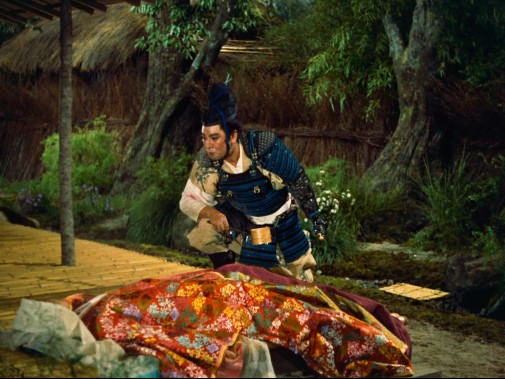
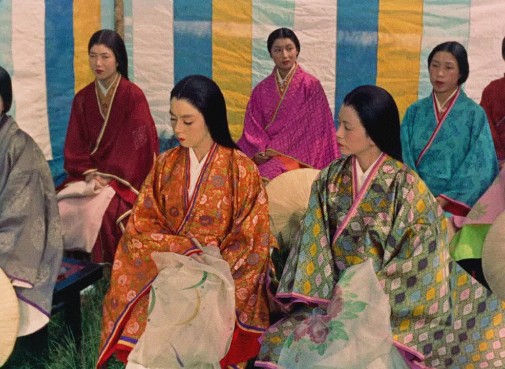
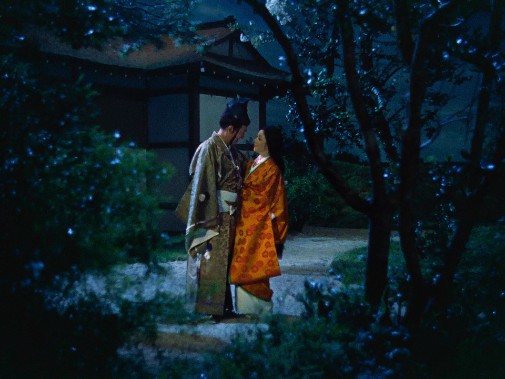
That picture was Teinosuke Kinugasa's Gate of Hell, a period drama (jidaigeki) that criticizes militaristic power through a sordid tale of romantic obsession and ultimate sacrifice. Shot in hyper-saturated Technicolor and overtly designed to evoke the historical accounts on painted scrolls, the film feels like a pictorial relic given life. The cruelty of the story is made more intense by the contrast with the beauty of its pageantry, colorful silks filling the screen at the same time fear and lust inflame the character's souls. In other words, Gate of Hell is a visual feast.
Such wonders conquered the picture a 1954 Honorary Academy Award for Best Foreign Language Film and, more surprisingly, a nomination for Best Costume Design-Color. That said, the nod wasn't attributed to the film's credited costume designer, Shima Yoshizane. Instead, Sanzo Wada, a theatre costumer and painter of beautiful woodblock prints, was credited as a color consultant for the film and won the Oscar. Matters of confusing crediting aside, it's difficult, if not impossible, to argue against this victory, for the costumes in Gate of Hell are miracles of color and texture.
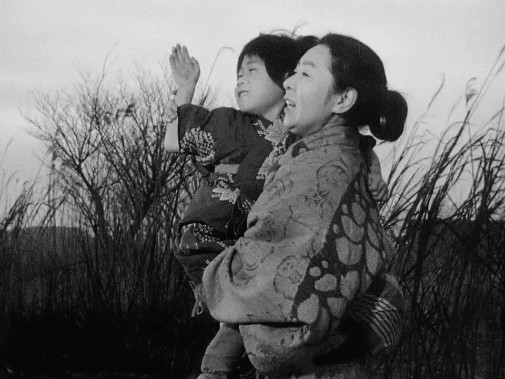
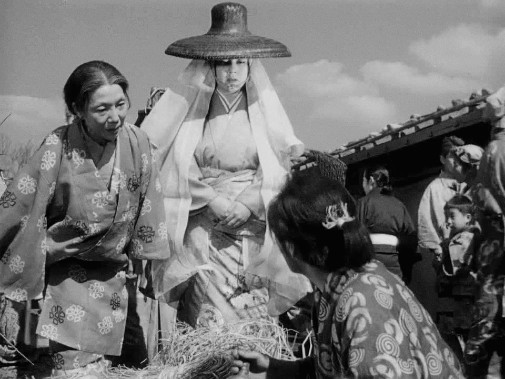
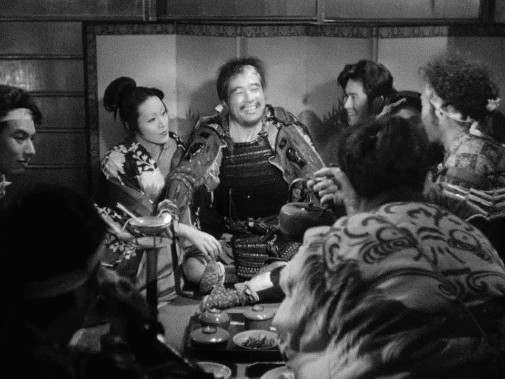
The following year, it was Kenji Mizoguchi's Venice Film Festival-winning Ugetsu that got a nod for Best Costume Design, this time in the black and white category. Like Gate of Hell, Ugetsu is a period drama, though one focused on plebeians rather than aristocrats, where ghosts coexist with the mundane horror of Humanity. It's a sorrowful tale that's as painful as it is mesmerizing. The use of patterns in its costumes is of special splendor, drawing a social hierarchy through cloth and making the glamour of the wealthy look positively otherworldly. It was a deserved nomination and designer Tadaoto Kainosho would have been a good winner.

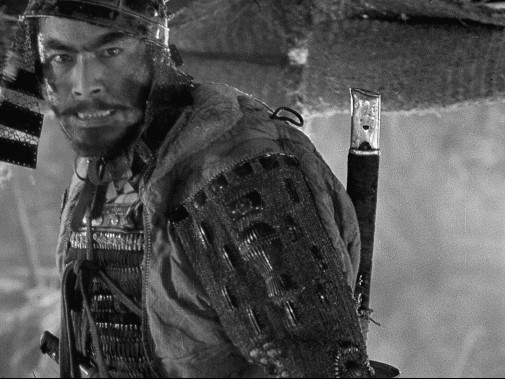
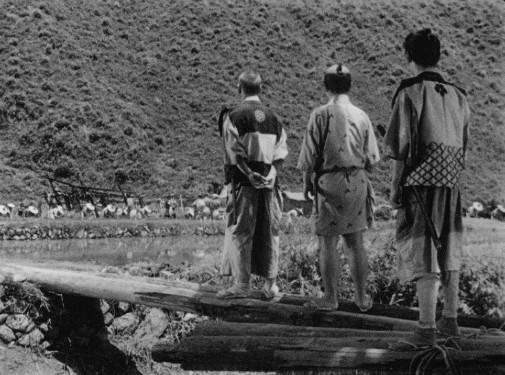
The third and fourth Japanese films to be nominated for Best Costume Design were two of Akira Kurosawa's monochrome period epics. First up, we have the legendary Seven Samurai, where costume designer Kôhei Ezaki evokes the historical past with great materiality while also defining each character with lived-in details. That picture competed at the 1956 Oscars and it lost to the Judy Holiday vehicle The Solid Gold Cadillac with costumes by Jean Louis.
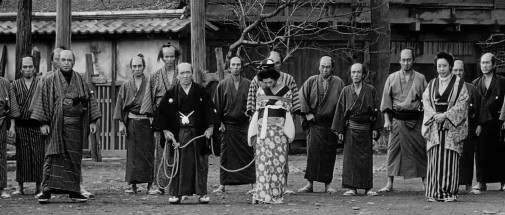
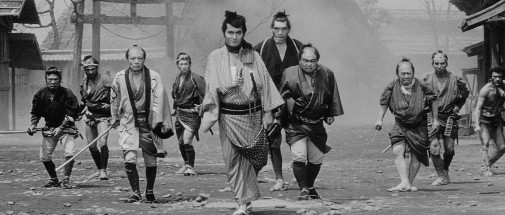
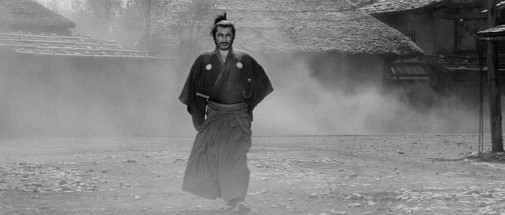
1961's Yojimbo was the second Kurosawa film to conquer a Costume Design nomination. Like it happened in Seven Samurai, the costumes have to establish the social ecosystem of a war-torn town and delineate the oddness of the outsiders to the community. Toshiro Mifune appears in both films, but his characters and costumes are very distinct. Instead of the muddy armor of the first feature, he now wears clothes that might show the strain of time and usage but exude a regal elegance befitting a master warrior like Yojimbo. Costume designer Yoshirô Muraki lost the Oscar to Piero Gherardi's fashionable creations for Fellini's La Dolce Vita.


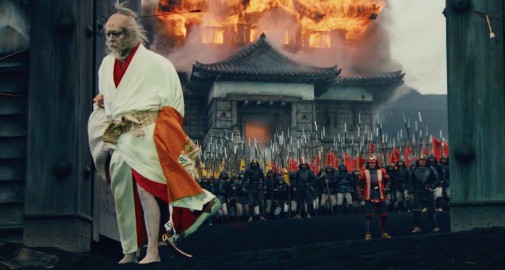
Finally, we arrive at the most nominated Japanese film in Oscar history, a work honored for its direction, art direction, costume design, and cinematography. Once again, we're exploring the filmography of Akira Kurosawa, though, this time around, the epic is in color instead of black and white. 1985's Ran is an apocalyptic fusion of Shakespeare's King Lear, the parable of Mōri Motonari, and Kurosawa's particular flavor of fatalistic nihilism.
It's also a savage spectacle, as bloody as it is gorgeous, all of it exploded into monumental proportions. Costume designer Emi Wada took three years to construct the picture's wardrobe, conceiving around 1500 individual costumes that were made following sixteenth-century techniques for maximum historical accuracy. In the face of such an accomplishment, Oscar couldn't refuse to give her the award, even when Best Picture-winning Out of Africa was also a contender in the category.
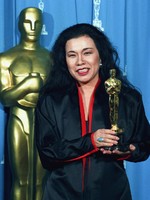 Apart from the costume designers of Gate of Hell and Ran, there's another Japanese winner in the annals of the Best Costume Design Oscar. We're, of course, talking about the one and only Eiko Ishioka whose work in Bram Stoker's Dracula is the stuff the dreams (and nightmares) are made of.
Apart from the costume designers of Gate of Hell and Ran, there's another Japanese winner in the annals of the Best Costume Design Oscar. We're, of course, talking about the one and only Eiko Ishioka whose work in Bram Stoker's Dracula is the stuff the dreams (and nightmares) are made of.
Are you a fan of any of these films? More importantly, do you think they deserved their Oscars?